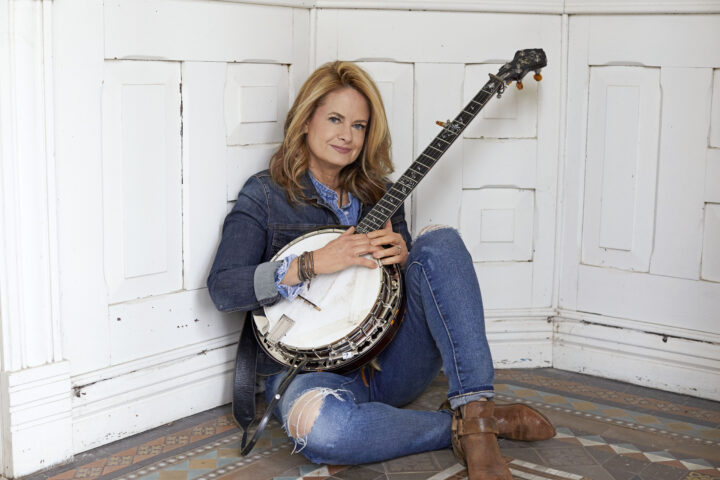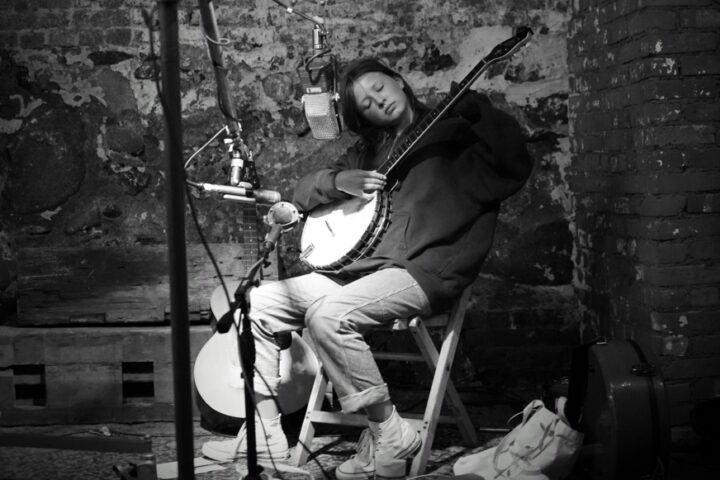When looking into purchasing an open back banjo, there are an overwhelming amount of different variables to consider – the list is extensive, spanning from scale length to bridge placement. But at the end of the day, how your banjo plays and sounds mainly comes down to the setup and how all of these different variables interact with each other. Today, I’m diving into four elements that are frequently discussed – tone ring, head, rim size and wood – and unpacking what they are and what they do. As a player, I’ve always been interested in the multitude of things that affect sound, so I interviewed builders, experts, dealers and players to hear their take on how these components function and differ.
Tone Ring
One of the first details buyers should note is the tone ring. In a physical sense, the tone ring is a metal or wooden ring (configured differently depending on design) that either rests or is attached to the top of the rim, right underneath the head. The tone ring is critical when referring to sound. Though so much of a banjo’s tone is a result of many different variables, the tone ring acts as a kind of core to its voice. The way it works is it reacts with the head and the rim to the vibrations, changing the tone based off the materials used. Jason Romero of J. Romero Banjo Co. explains that from his understanding, the traditional function was “to add weight, stability, and volume to a pre-amplification banjo, with the possibility of color depending on the materials and banjo setup.” Some tone ring designs date back to the 19th century, whereas others are modern creations.
A few of the most popular tone rings you’ll see mentioned include Tubaphone, Dobson, Rolled Brass, Whyte Laydie, and Wooden. Key distinctions in sound typically cover brightness, warmth, bass response and clarity. William Seeders Mosheim of Seeders Instruments shares his favorites: the Dobson Special and the Whyte Laydie. “The Dobson Special has the best bass response in larger rims,” he says, “and the Whyte Laydie has a balanced tone with plenty of volume.” I also prefer the Dobson Special, made by Will on my Seeders Instruments banjo. It creates a satisfying balance between a deep low end and a crisp, full sound, especially with a 12″ walnut rim. Clawhammer banjoist Brad Kolodner agrees that a Dobson tone ring is his favorite, as “it accentuates both the sonic low and high ends of the instrument. It has a warm, tubby sound in the lower register, a strong mid-range and very bright, bell-like upper register that really cuts through. I like my banjo to have a fair amount of ‘punch’ with clarity and brightness that sings up and down the neck, particularly in an ensemble setting.”
From a more historical perspective, acclaimed player Adam Hurt describes the Dobson Silver Bell tone ring and how it differs tonally from some modern designs, particularly when made larger than 11″. He prefers the Silver Bell in the original 1880s form as well as ones recreated by modern makers because of “where it falls on both the dark-to-bright and focused-to-fuzzy spectrums, favoring the dark yet focused end of things, where so many other tone rings seem to skew in more extreme directions. One caveat: the originals were made in a variety of diameters, but to my knowledge they were never larger than 11″, even at a time when other manufacturers were offering much larger rim diameters. This is significant! To my ears, the modern Dobson ring in the historically inaccurate yet rather popular 12″ diameter loses much of its special sonic properties. The sparkling high-end disappears, as does a certain amount of the clarity. I think that Henry Dobson must have realized these pitfalls.”
It is not surprising that with the popularity surrounding Dobson tone rings that Bill Rickard of Rickard Banjos says they’re selling more Dobsons than any other tone ring because of their warm nature.
Romero makes their own tone rings by fine-tuning their designs to achieve a unique sound. “The three tone rings that we’ve developed are my favorites – a rosewood, the Romero and the Belle Rose” Romero explains. “The aim of our rosewood tone ring was to provide some weight and stability to the rim and to add an extremely dense cap on the rim for the head to rest and vibrate on. In hoping to find an alternative to brass rings and looking for a less ring overtone sound, my Romero tone ring came about as a combination of a heavy brass ring sitting on a cap of rosewood. Moving up the spectrum of volume and complexity, the Belle Rose is a 1/2″ brass tube resting in a rosewood v-channel.”
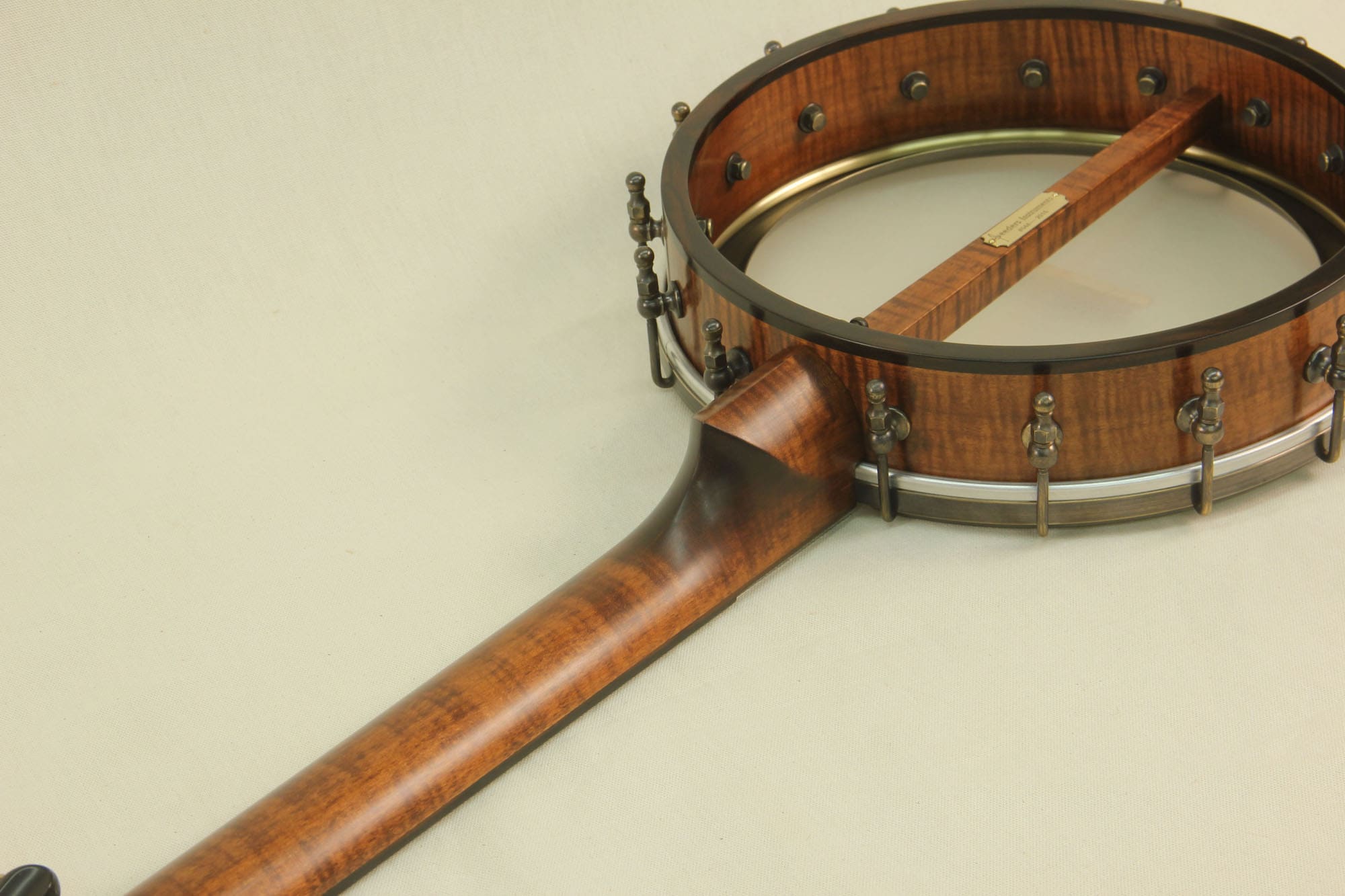
Head
The head of a banjo is not only about aesthetic; it acts as the soundboard. It’s the primary vibration surface and, as banjo expert Bob Carlin explains, the “head material and tightness critically affect the sound of the instrument.” The three most popular heads are skin, Renaissance, and Fiberskyn, all of which produce a different sound depending on the setup: Skin heads are known to be particularly warm and well rounded, with a lot of bass and mid range; Renaissance heads, though synthetic, are similar in regards to a well rounded tone that isn’t too bright, but can be easier than skin heads as far as consistency goes; a Fiberskyn head has a particular bright tone without a lot of overtones.
There is a general understanding that, if setup correctly, skin heads produce the best tone. The builders I spoke to all emphasized the capabilities of a skin head, with Renaissance being a close second. “We find that a good quality, well-mounted and stable skin will always provide a sweet, livelier and more complex tone, with less unwanted harsh thinness.” Romero says. “A Renaissance head under perfect tension for a particular banjo will be similar, minus about 10% of that sweetness I’m talking about.” Mosheim also describes the skin head sweetness, but explains “they can lack volume and be hard to keep to the right tension depending on humidity and temperature.”
Brad Kolodner touches on this frustration. “While the tone of a perfectly balanced skin head can’t be beat,” he says, “the stability and consistency of the Renaissance head is why I use the latter on my banjos.” This is where the environment in which you’ll be playing and the setup comes into play – even though the tone of a skin head is unbeatable, the player has to take into consideration whether they’ll be playing indoors and outdoors, in humid and dry climates, etc. Touring banjoist Allison de Groot agrees that their sensitivity is difficult to manage when on the road, so she has Remo Renaissance heads on all of her banjos and is happy with the sound. Kolodner also prefers a Renaissance head for the volume, as he plays in bands with an accordion, fiddle, hammered dulcimer and bass. “The Renaissance head helps my banjo cut through and be heard in an ensemble setting while still having a bit of that warm, smooth tone you can get from a skin.”
Adam Hurt, who prefers natural skin because of the warmth and clarity, emphasizes the importance of a good setup, especially in the case of a skin head. Hurt shares that one of the more important factors is the thickness of a head. The most important take away is that if the banjo is setup correctly, it will significantly help in its consistency. “I live in an area with very humid summers and I also travel with a calfskin head-equipped banjo in many other climates,” Hurt explains, “yet my skins very rarely require retensioning if they are properly mounted and tensioned in the first place.”
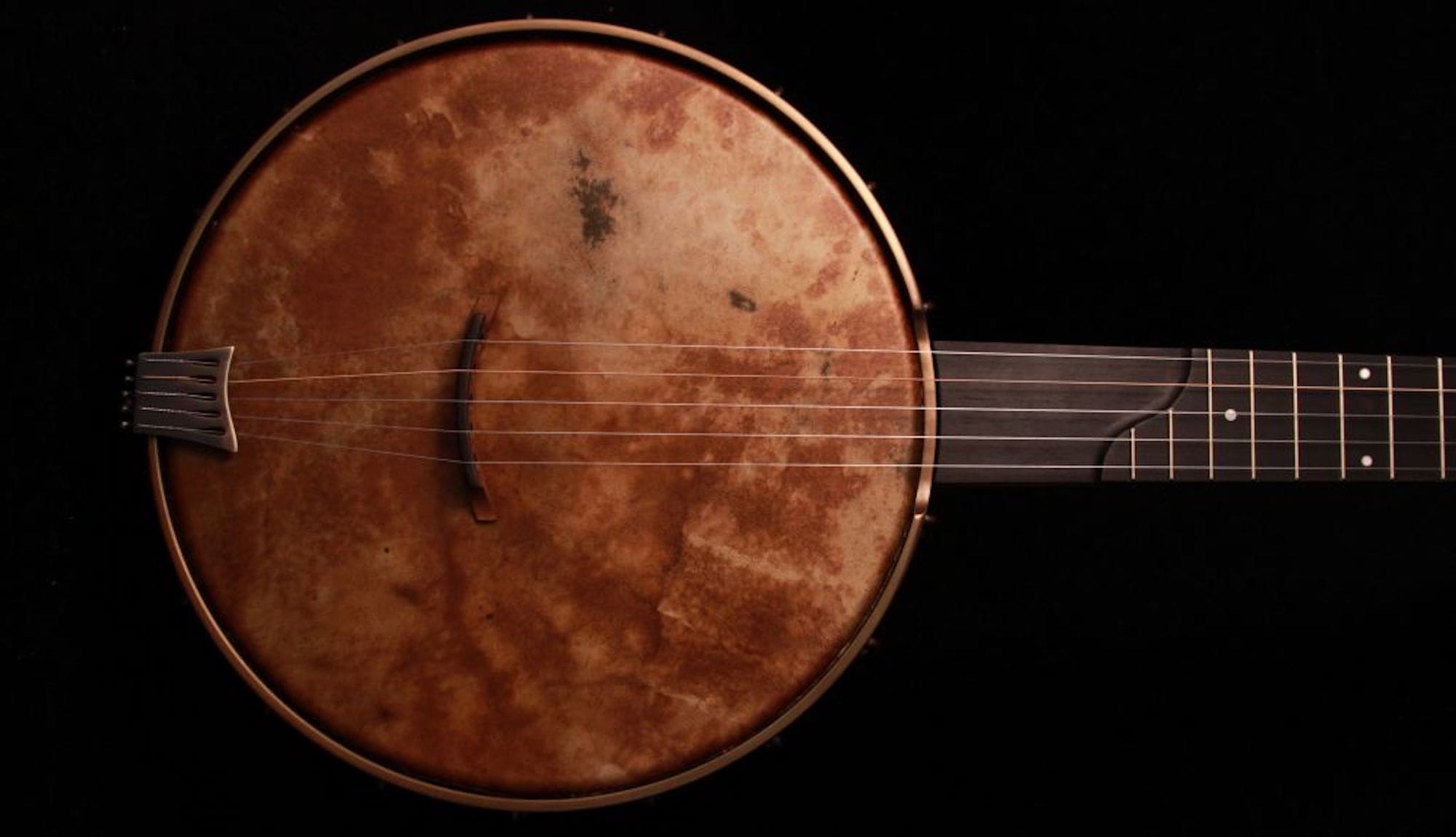
Rim Size
We’re not done yet! There are also a few different options for rim sizes, but it seems there is a constant discussion surrounding 12″ versus 11″ rims. Though sound is so much more than rim size, Romero says “the construction, wood, thickness, height and amount and type of hardware all contribute to a given rim’s effect on tone” – there is a pretty basic understanding of how the size can alter sound. In changing the size of the rim, it also changes the vibrations on the head. To put it simply and in Bob Carlin’s words, “smaller rims have less bass frequencies and larger rims have more bass frequencies.” Rim sizes usually range from 8″ (for piccolo banjos) to 13″.
Between the popular 11″ and 12″ rims, the main difference is that 11” has a very well rounded tone with note clarity, whereas 12″ brings out the low frequencies with more bass response. Romero and Kevin Enoch, of Enoch Instruments, prefer the 12″ rims, mainly for the low end, whereas Brad Kolodner and Adam Hurt’s primary banjos have 11″ rims. “While the 12″ banjo rim sounds nice solo, I find that 12″ banjos can get pretty muddy when you put them into overdrive. The 11″ rim has a nice punch to it,” Kolodner says. “I’m also a big fan of playing up the neck. The 11″ rim accents the upper register of the banjo whereas the 12″ accents the lower register.” Adam Hurt also favors the 11″ for its clarity, and thinks that if a player wants a bassier tone, that’s possible with an 11″ and a setup focused around this desire.“I think that an 11″ rim with a skin, a simple rolled brass hoop-type tone ring, and a No-Knot tailpiece can come awfully close in this regard to the typical 12″ sound without sacrificing clarity,” he says. In my experience, the 12″ rim I have balances well with all other elements of the banjo to create a warm tone with a strong bass response; however, like Kolodner, I play up the neck often and sometimes feel like I lose the drive of the high end.
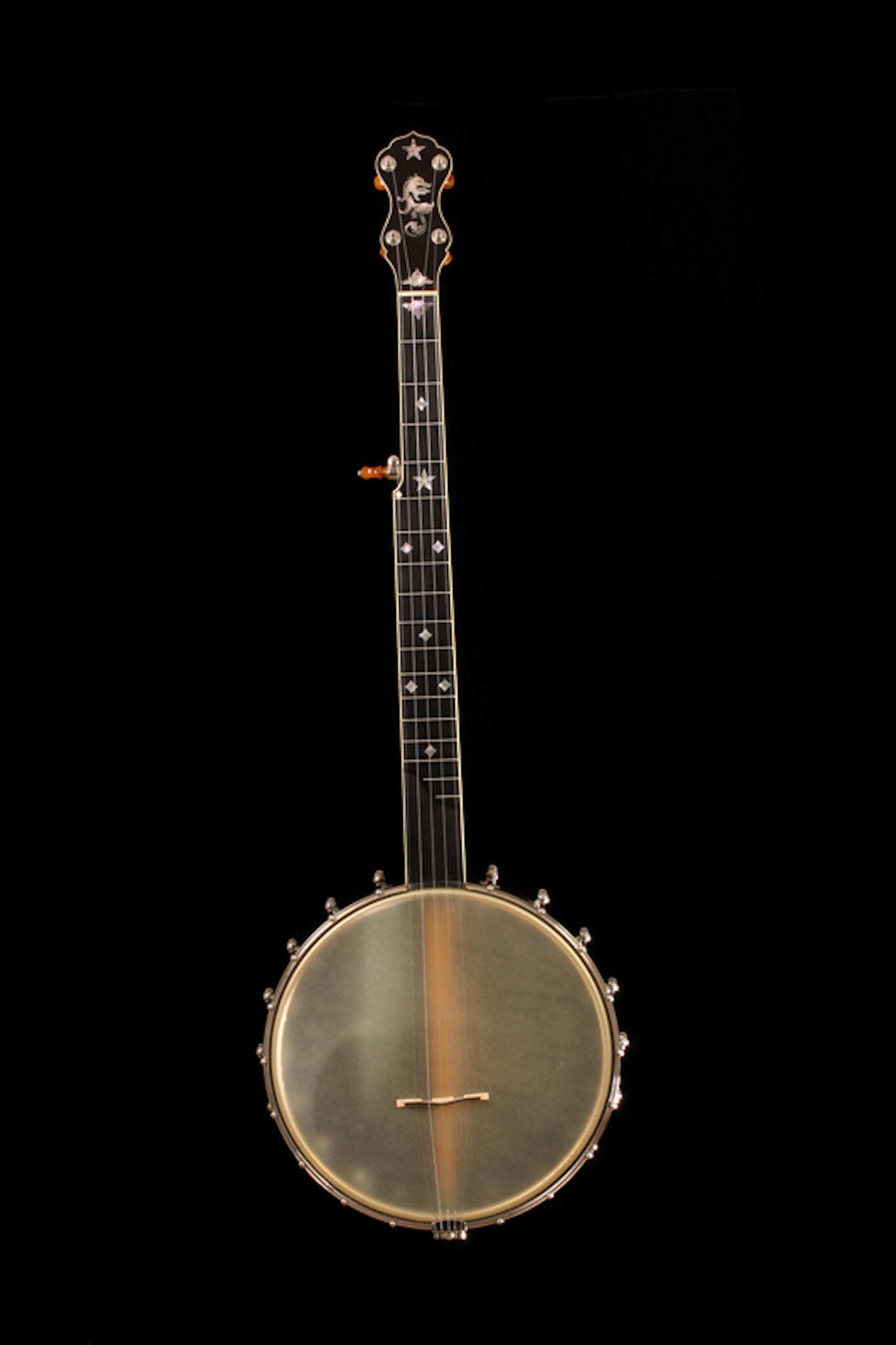
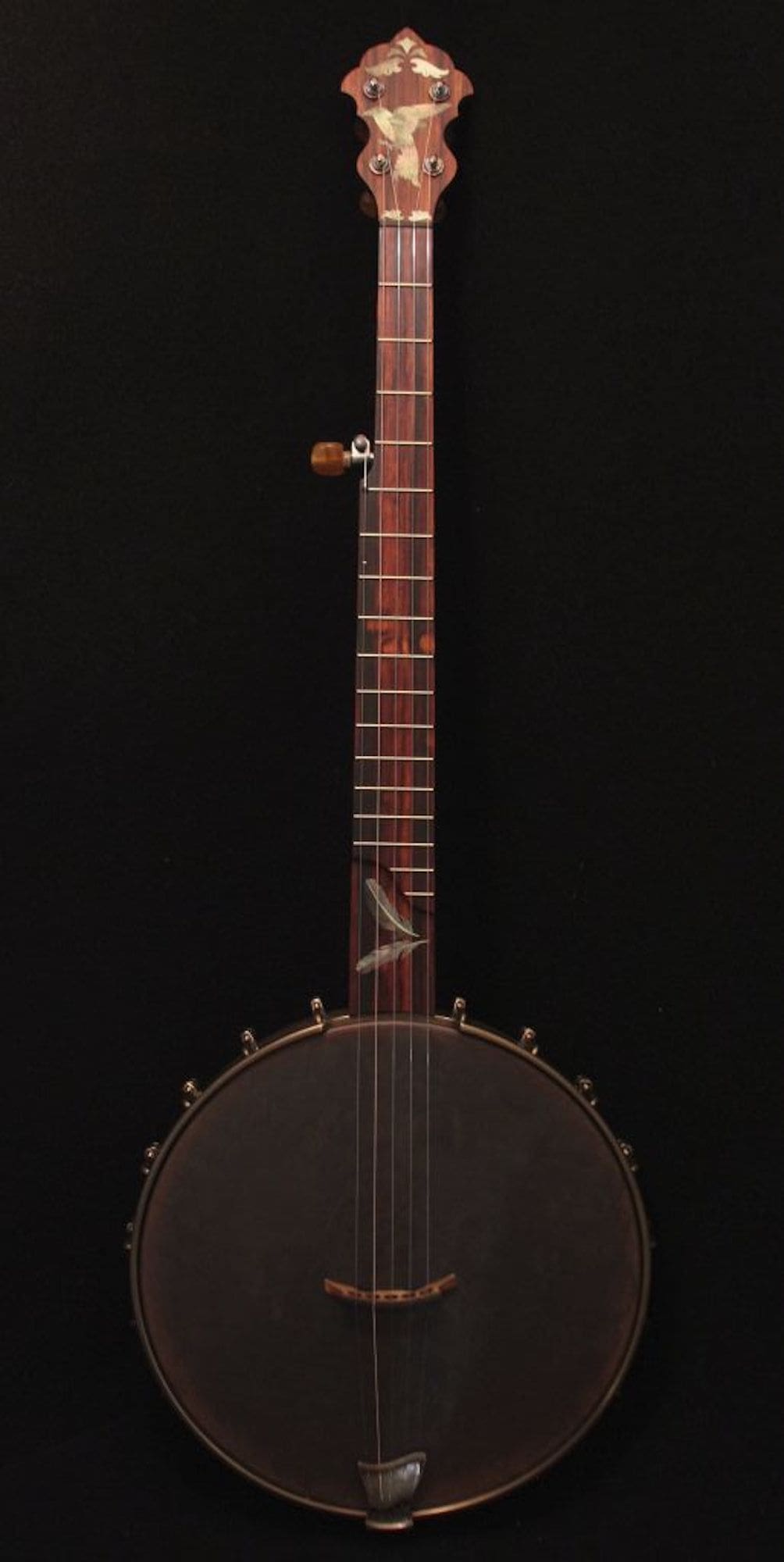
Wood
Guitarists may obsess over their tone woods, but at the end of the day, the wood used has a fairly small effect on the tone of the banjo. It does change its resonance, but it’s also a lot about appearance. “All things being equal,” Carlin explains, “identical banjos made from harder woods have the largest frequency range, sustain, clarity and volume range, and those from softer woods have less of those characteristics.” Some of the most popular woods include maple, walnut, mahogany and cherry.
Mosheim gives the basic run down on the differences in these woods: “Maple is bright with great note clarity and plenty of volume, walnut is warm with good clarity and a well-rounded frequency response but can be a little muddy depending on other factors used, mahogany is very similar to walnut but usually has a mellower tone, and cherry is bright with nice note clarity but lacks some bass response.” Romero elaborates that there are tonal differences in woods, but with that being said, “most woods can sound similar depending on all the other factors in the banjo’s construction (tone ring, rim size, bridge weight/height, head, etc.).”
Kolodner agrees that tonally speaking, he hasn’t noticed a considerable difference in woods for the neck. But, he adds, “I like the aesthetics of darker woods particularly mahogany and walnut.” This is something Enoch suggests to customers – pick the wood you like the look of because the banjo can be tweaked to achieve subtle differences. Hurt prefers walnut, as it “splits the difference between very bright (maple) and very mellow (mahogany).” I agree with both. Aesthetically, I am most intrigued by walnut, but in combination with everything else, I also find it has a warm tone.
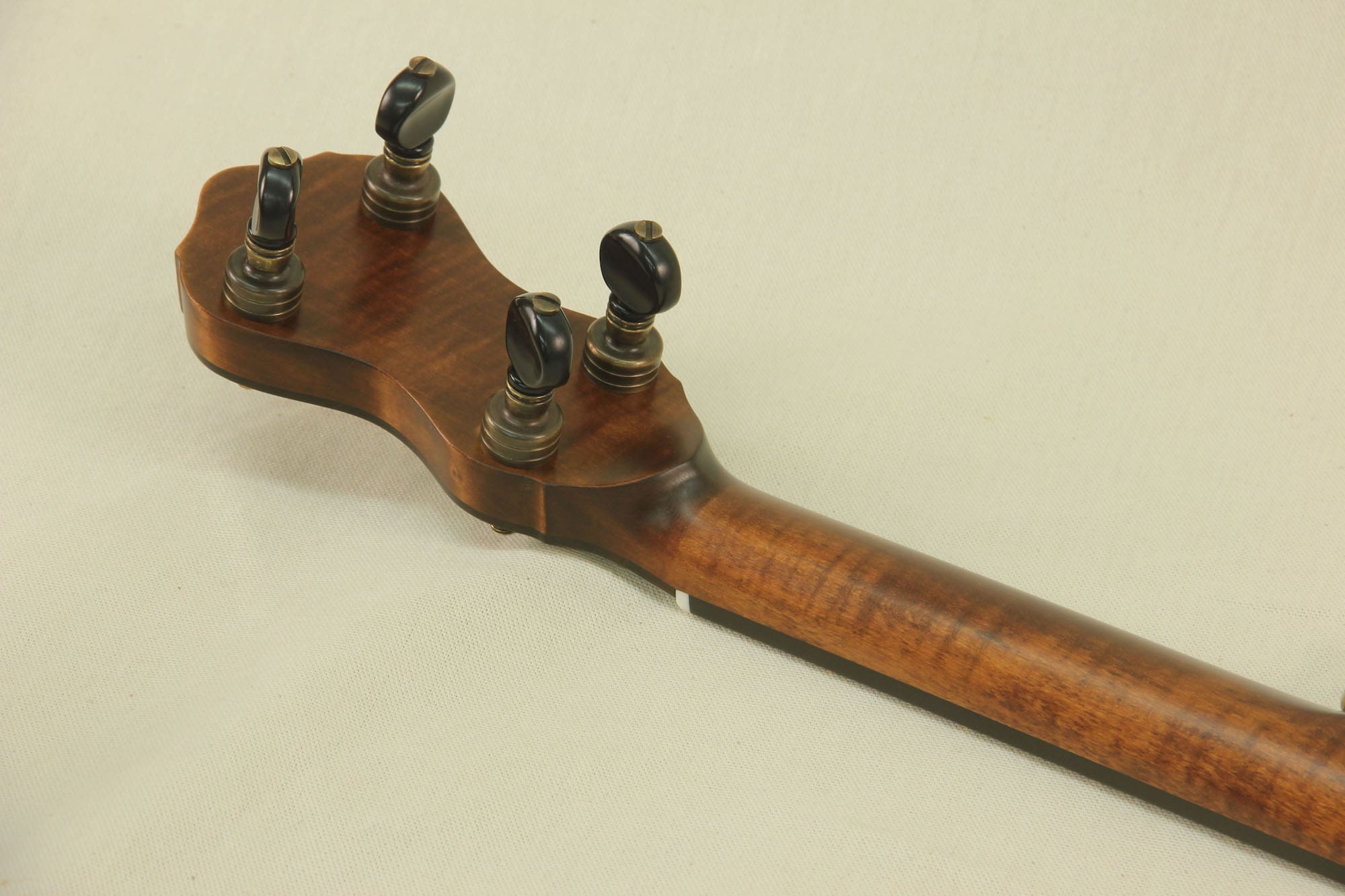
And at the end of the day, what’s most important? “Yes, it is okay to buy that third banjo,” Romero says with a laugh. “Find more time to practice. Practice with a metronome. Listen all the time. Don’t hang your banjo with a goatskin head next to the fireplace.”
